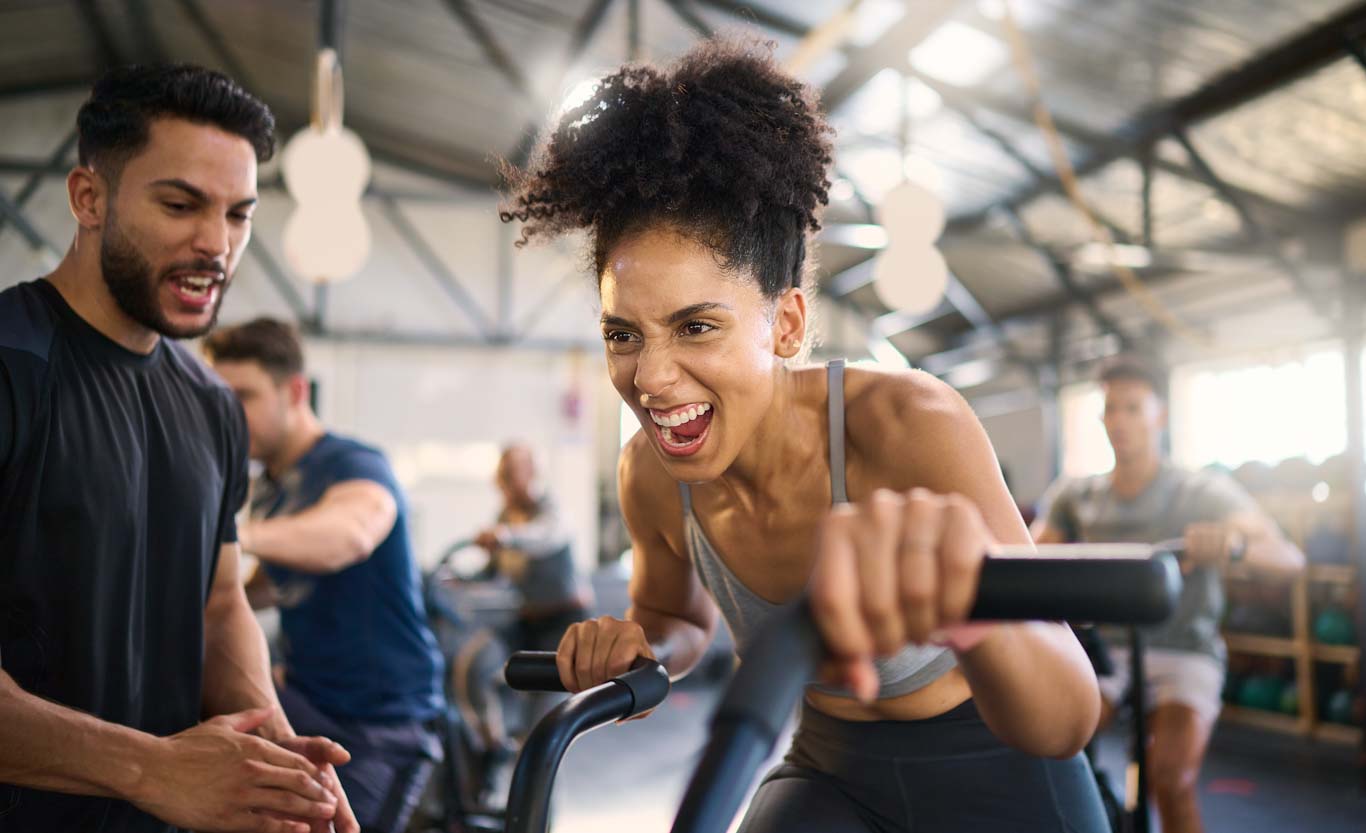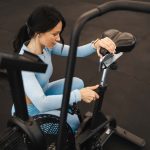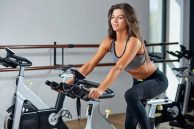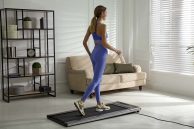Unleashing the Power of HIIT Indoor Cycling: A Comprehensive Guide

In the ever-evolving realm of fitness, there’s a workout trend that’s been turning heads and raising heart rates: High-Intensity Interval Training, or HIIT. Coupled with the dynamic world of indoor cycling, this fusion creates a fitness phenomenon that’s not only effective but also invigorating. In this comprehensive guide, we’re diving into the myriad benefits of HIIT indoor cycling and providing you with the ultimate blueprint to harness its potential in the comfort of your own home.
The 6 Benefits of HIIT Indoor Cycling
1. Efficient Fat Burning
Picture this: you’re sprinting up a virtual hill on your indoor cycle, pushing yourself to the limit, and then transitioning into a brief recovery period. This alternating intensity isn’t just a clever workout technique; it’s a fat-burning powerhouse. HIIT indoor cycling ignites your metabolism, resulting in increased calorie burn both during and after your session. Studies have shown that HIIT can be even more effective at burning fat than traditional steady-state cardio. So, while you’re pedalling your way to better health, your body is also torching those calories, helping you achieve your fitness goals faster.
2. Improved Cardiovascular Health
Your heart is at the core of your health, and HIIT indoor cycling knows how to give it a serious workout. By pushing your cardiovascular system to its limits during intense intervals, you’re enhancing your heart’s efficiency and increasing your VO2 max – a measure of your body’s oxygen utilization. This translates to improved endurance, better circulation, and a heart that’s ready to take on any challenge life throws your way.
3. Time-Saving Advantage
Let’s face it – life can be busy, and finding time for lengthy workout sessions isn’t always feasible. That’s where HIIT indoor cycling shines. With shorter workout durations compared to traditional cardio, you can achieve exceptional results without spending hours at the gym. The secret lies in the intensity; HIIT maximizes your effort in less time, making it the perfect solution for those who want to get the most out of every minute.
4. Muscle Building and Toning
HIIT indoor cycling isn’t just about cardiovascular benefits; it’s a muscle sculptor too. The combination of intense pedalling and resistance variations stimulates muscle growth and definition. Whether you’re aiming to strengthen your legs, glutes, or even your core, HIIT cycling targets major muscle groups, leaving you with a toned and lean physique that’s the envy of others.
5. Enhanced Metabolism
Ever wished your body could keep burning calories even after you’ve left the gym? Enter the “afterburn effect,” scientifically known as excess post-exercise oxygen consumption (EPOC). HIIT indoor cycling triggers this phenomenon, causing your body to continue burning calories for hours after your workout. This means you’re reaping the benefits long after you’ve stepped off the bike – a bonus that steady-state cardio just can’t match.
6. Adaptability and Convenience
HIIT indoor cycling is a workout for everyone. Regardless of your fitness level, you can tailor your sessions to match your abilities. Whether you’re a beginner or a seasoned fitness enthusiast, the flexibility of HIIT allows you to push yourself while respecting your limits. And the best part? You can do it right in the comfort of your home. No need for a crowded gym – all you need is your indoor cycle and the determination to succeed.
How Many HIIT Cycling Sessions Should You Do a Week?
The Concept of Overtraining
As enticing as HIIT indoor cycling is, it’s important to remember that more isn’t always better. Overtraining can lead to burnout and potential injury. It’s crucial to strike a balance between pushing your limits and giving your body the rest, it needs to recover.
Beginner Recommendations
For those new to the world of HIIT, starting with 2 to 3 sessions a week is ideal. This allows your body to adapt gradually and minimizes the risk of overexertion. As you become more accustomed to the intensity, you can gradually increase the frequency of your sessions.
Intermediate to Advanced Guidelines
Experienced fitness enthusiasts can push the envelope a bit more. Aim for 3 to 4 sessions a week, with a mix of different HIIT cycling formats to keep things exciting. However, always listen to your body and don’t hesitate to take an extra rest day if needed. Remember, progress is a journey, not a race.
HIIT Cycling Workouts You Can Do at Home

Warm-up and Safety Precautions
Before embarking on your HIIT journey, ensure you’re adequately warmed up to prevent injury. Start with 5-10 minutes of light cycling, followed by dynamic stretches. Safety is paramount; make sure your indoor cycling setup is secure, and wear proper workout gear, including appropriate footwear.
Sprint Intervals
Sprint intervals are the bread and butter of HIIT cycling. Alternate between 20-30 seconds of all-out sprinting and 1-2 minutes of recovery cycling. Repeat this pattern for 20-30 minutes and watch your fitness soar.
Tabata Training
Tabata is a tried-and-true HIIT format. Cycle at maximum effort for 20 seconds, followed by a 10-second rest. Repeat this cycle for 4 minutes, giving your all during each 20-second interval.
Hill Climbs and Resistance Intervals
Embrace the resistance. Simulate hill climbs by increasing your bike’s resistance and pedaling at a steady pace for 2 minutes, followed by 1 minute of recovery. Repeat this sequence for a challenging lower body and cardiovascular workout.
Pyramids and Variability
Variety is key to preventing workout monotony. Try pyramid intervals: start with 20 seconds of high intensity, then increase the duration by 10 seconds with each interval. Once you hit your peak, work your way back down the pyramid.
Check out this additional video guide by Sunny Health & Fitness.
Recommended Product: Sunny Health & Fitness Exercise Bike
Tips for Optimal HIIT Indoor Cycling Experience
Proper Nutrition and Hydration
Fuel your body for success. Consume a balanced meal 1-2 hours before your session, and hydrate adequately. During your workout, sip water to stay hydrated and maintain peak performance.
Listening to Your Body
Push yourself, but not at the expense of your well-being. Listen to your body’s cues. If you’re feeling excessively fatigued or in pain, take a step back and rest. Your body knows best.
Incorporating Strength Training and Recovery
HIIT indoor cycling is incredible, but don’t forget about overall balance. Integrate strength training sessions to maintain muscle strength and diversity. And don’t underestimate the power of recovery – rest days and light active recovery exercises are essential for optimal results.
What are the indicators that I am performing HIIT correctly?
To know if you’re doing HIIT correctly, you should focus on maintaining a high level of intensity during the work intervals and allowing yourself to recover during the rest intervals. Here are some indicators:
- During the work intervals, you should be working at a very high intensity where it becomes challenging to maintain a conversation.
- Your heart rate should increase significantly during the work intervals.
- You should feel fatigued by the end of each work interval but be able to recover during the rest intervals.
- Proper form is crucial to avoid injury, so make sure your cycling technique is on point.
- Progress should be noticeable over time, with improved endurance and performance.
What are the disadvantages of HIIT training?
While High-Intensity Interval Training (HIIT) comes with a host of advantages, it may not be suitable for every individual. Some potential disadvantages include:
- Risk of overtraining and injury if not performed with proper form and recovery.
- Intensity can be too high for beginners or individuals with certain medical conditions.
- It may not be the best option for those seeking a low-impact workout.
- HIIT can be mentally challenging and may not be enjoyable for everyone.
Conclusion
In the realm of fitness, HIIT indoor cycling is a game-changer. It offers a plethora of benefits, from efficient fat burning to improved cardiovascular health. With adaptable formats and the convenience of home workouts, there’s no excuse not to give it a try. Remember, the journey to better health is a marathon, not a sprint, so pace yourself, listen to your body, and revel in the empowerment that comes from mastering the art of HIIT indoor cycling. Get ready to pedal your way to a stronger, fitter, and more vibrant you!
FAQs
How quickly can you see results from HIIT?
The speed at which you see results from HIIT can vary depending on factors like your fitness level, diet, and consistency. Some people may start noticing improvements in cardiovascular fitness and endurance within a few weeks, while others may take longer. Generally, with consistent effort, you can expect to see significant results in 4-12 weeks.
Should you start or end your workout with HIIT?
It depends on your goals and preferences. Some people prefer starting with HIIT to get their heart rate up and maximize calorie burn early in the workout. Others prefer ending with HIIT as a finisher to push their limits. Experiment with both approaches and see which one works best for you. Just make sure to include a proper warm-up and cool-down regardless of when you do HIIT.
What type of HIIT is most effective?
The effectiveness of HIIT can vary depending on personal preferences and goals. Indoor cycling is a great option, but other effective forms of HIIT include sprinting, bodyweight exercises, and circuit training. The key is to choose an activity you enjoy and can sustain while pushing yourself during the work intervals.
Should I do HIIT or cardio first?
Whether you start with HIIT or traditional cardio depends on your goals and energy levels. If your primary goal is fat loss and you have enough energy, starting with HIIT can help you burn more calories in less time. However, if you want to build endurance and gradually increase your fitness level, you might start with steady-state cardio and finish with HIIT to add intensity.
Further reading and references:
- Pre & Post Indoor Cycling Workout
- PeerJ. 2018; The effect of running versus cycling (HIIT)
- Med Sci Sports Exerc 2011 Sep; The effects of a 45-min vigorous cycling
- Journal of Sport and Health Science, Volume 10, Issue 4, July 2021, Pages 478-487 – The effects of Six HIIT sessions over 5 days
- The University of New Mexico – HIIT vs Continuous Endurance Training








